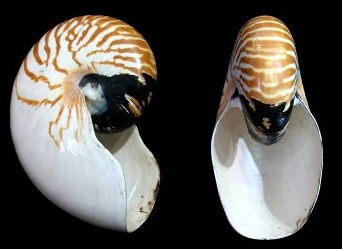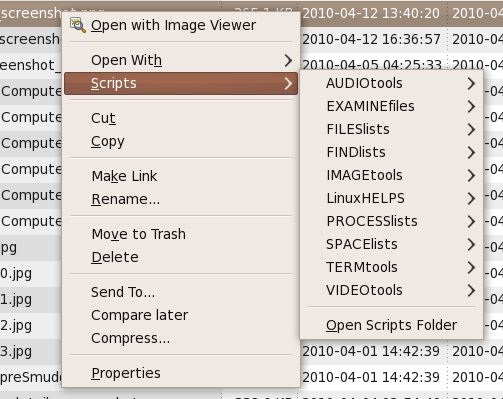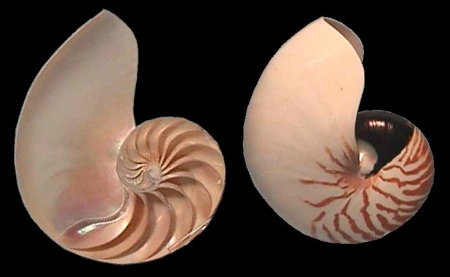FE Nautilus Scripts
CODE for some
'IMAGEtools'
Scripts

Poke this image to see another
Nautilus-shell shape.
Poke off-image to change back.
FE Nautilus ScriptsCODE for some'IMAGEtools'Scripts |

Poke this image to see another Nautilus-shell shape. Poke off-image to change back. |
FE Home Page >
FE Overview Page OR
FE Downloads Page >
FE NautilusScripts DESCRIPTION and CODE-MENU page >
This 'IMAGEtools' CODE Page
! Note !
More scripts may be added --- and the scripts here
may be touched up or revised occasionally.
< Go to the List of Code-Links, below. >
(SKIP THE INTRODUCTION)
|
INTRODUCTION to the In 2009, I finally 'took the plunge' and migrated my mail, bookmarks, etc. from a (main) Microsoft Windows machine to a (main) Linux machine. I have documented reasons why I went to Linux, along with install notes, on an Ubuntu Install notes page. I do a lot of web page development in which a lot of photos and other image files are processed (renamed, cropped if need be, down-sized, gamma-corrected if need be, thumbnailed, etc.). I found that I really missed the (free) Irfanview program available only for MS Windoze. I am not the only one in that regard. You can do a WEB SEARCH on terms like 'irfanview linux replacement image processing' and you will find many people who feel the same way. In any case, my search for image processing replacements is documented on the FE Nautilus Scripts DESCRIPTION page. Writing Nautilus scripts more than 'filled the bill'. Besides image processing scripts, I accumulated other types of handy Nautilus scripts, whose source code is accessible via the 'FE Nautilus Scripts DESCRIPTION' web page mentioned above. The 'FE Nautilus Scripts' are categorized into groups which are put in subdirectories of the directory $HOME/.gnome2/nautilus-scripts in the Gnome2-Nautilus desktop and file-manager environment. In the MATE-Caja desktop and file-manager environment, the 'Caja' file manager looks for 'Nautilus scripts' starting at the directory $HOME/.config/caja/scripts The subdirectory names provide the names that Nautilus (or Caja) presents in its ' Scripts > ' submenus. The names of the FE subdirectories (the FE 'script group names' or 'category names') are shown by the Nautilus file manager as names of the 'Scripts' submenus. Below is an (old) image of the original group names in an original FE Nautilus Scripts menu. |

|
I have accumlated quite a large family of image processing scripts, as indicated in this (very outdated) image of the 'IMAGEtools' sub-menu.
(Poke this image link to see the menu cascade The names of many of these scripts have been changed (standardized) since the above image was captured. And sub-directories of the 'IMAGEtools' directory have been added to handle a plethora of 'IMAGEtools' scripts. --- Below is a list of links to the source code of many of the 'IMAGEtools' FE Nautilus Scripts. The names of the scripts are fairly descriptive of what they are meant to do. The comments in the scripts provide more detail on the purpose and methods of each script. Furthermore ... The four-part naming convention used for the FE Nautilus Scripts is explained on a FE Nautilus Scripts Naming Convention page. Be aware of the 'file safety/usage' considerations (no worries) posted near the bottom of the FE Nautilus Scripts DESCRIPTION page. |
|
How the code samples are presented Click on any link in the list-of-links (above) to see the source code. Click on a Back button of your browser to return to this window. To download the source, 'right-click' on any of the links to get a popup window of your web browser and choose an option such as ' Save Link Target As ... ' . Scroll down this page to look for keywords of interest in the script names. Alternatively, use the 'Find text' option of your web browser to look for keywords on this page. For example, when looking for examples of scripts using the ImageMagick 'convert' or 'identify' command, use a keyword like 'convert' or 'ident'. Or when looking for scripts that involve the 'jpg' file suffix, use keyword 'jpg'. |

|
Bottom of this To return to a previously visited web page location, click on the Back button of your web browser a sufficient number of times. OR, use the History-list option of your web browser. OR ...
< Go to the start of the
|